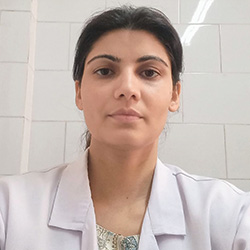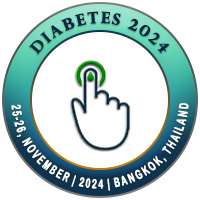
Rekha Yadav
UCMS,GTB Hospital, IndiaTitle: Corneal manifestations and treatment amongst patients with COVID-19 associated Rhino- orbito-cerebral Mucormycosis (ROCM)
Abstract
Purpose: Corneal manifestations in patients with COVID-19 associated Rhino-orbito-cerebral Mucormycosis are sparsely reported in literature.
Methods: A Retrospective, observational, record-based analysis of patients of ROCM with corneal involvement.
Results: A total of 220 patients were diagnosed with ROCM over a period of 3 months. Thirty-two patients had developed corneal manifestations. The mean age at diagnosis was 52.84 ± 12.8 years. The associated risk factors were systemic Mucormycosis, uncontrolleddiabetes, recent COVID-19 infection, injudicious use of systemic steroids. Twenty-nine patients were known diabetic, 32 had recent COVID-19 infection, and 13 gave a history of injudicious use of steroids. The right eye (RE) was affected in nine patients, left eye (LE) in 20 and both eyes in three patients. Nine patients had round-oval corneal ulcer. One patient each had a perforated corneal ulcer with uveal prolapse, sealed perforated corneal ulcer, spontaneously healed limbal perforation, diffuse corneal haze with hyphaema, panophthalmitis, diffuse corneal stromal abscess, limbal ischemia, anterior uveitis withposterior synechiae, inferior corneal facet, filamentary keratitis. Three patients each had a corneal melt, inferior conjunctival xerosis with chemosis. Orbital exenteration was done in six patients. Five patients of corneal ulcer healed. Topical eye drops amphotericin (0.5mg/ml) cycloplegic, antiglaucoma medications and lubricant eye drops were started along with systemic antifungals.
Conclusions: Central corneal ulcer was the commonest manifestation of Mucormycosis. The concentration as low as 0.5mg/ml amphotericin eye drop was effective in the treatment.
Biography
To be updated

